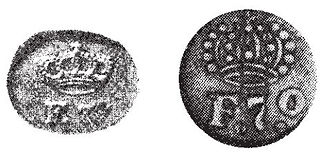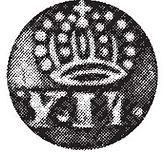Spanish-Philippine Counterstamped and Countermark Coinage (1828-1839)
Counterstamped and Countermark coins of the Philippines represent a legacy of adaptation and history, reflecting the country’s resilience during a time of economic and political challenges. Counterstamping and countermarking is the process of marking an already minted coin with an additional impression or stamp. This practice is often carried out for various economic, political, or practical purposes, such as authenticating foreign coins, revaluing currency, or adapting them for use in a new jurisdiction. The key difference between countermarking and counterstamping lies in the technique used—countermarking typically involves impressing a mark with a simple punch or die, while counterstamping is a more controlled process, often done using a screw press.
In the Philippines, the counterstamping and countermarking of coins occurred between 1828 and 1839. This practice was introduced following Spain's loss of its Latin American colonies between 1810 and 1825, which also severed the Philippines’ primary source of currency. After gaining independence, the newly formed Latin American states continued minting coins, many of which featured nationalistic slogans celebrating their freedom. These coins, often referred to as "insurgent coins," eventually made their way to the Philippines through trade.
The Spanish colonial government in the Philippines, facing a severe shortage of coins, initially allowed these foreign coins to circulate starting in 1826. However, the slogans on the coins raised concerns about the potential spread of revolutionary ideas in the colony. To address these concerns, an edict was issued requiring all such coins to be counterstamped before they could be used as legal tender which began in Oct of 1828.
The counterstamping served two purposes: to validate the coins for circulation in the Philippines and to obscure the slogans, ensuring they did not inspire dissent against Spanish rule.
1. The Manila Counterstamped
This counterstamped obscured the entire design on both sides of the coin. The obverse was stamped with the word “Manila” and the year of stamping beneath it, surrounded by a wide serrated border. The reverse featured a narrower serrated border with the inscription “HABILITADO POR EL REY N.S.D. FERN. VII” and the Spanish coat of arms in the center.
The process was delicate and introduced challenges. Coins had to be handled carefully, often leaving the original inscriptions partially visible. Additionally, the screw press machine frequently broke down, making the procedure costly and sporadic. As a result, Manila counterstamping was only done in 1828, 1829, and 1830.

Image Source: PCGS, Peru 1828 8 R

Image Source: en.numista, Bolivia 1830 8 R
2. The Circular Countermark
Introduced in October 1832 as a solution to the screw press issues, this design was a small circular crown bearing the initials of the ruling monarch, applied via hammering. There were two variations:
F7: Representing King Fernando VII, used until his death in 1834.

Image Source: Standard Catalog of World Coins 1801-1900, 8th Edition


Images Source: Standard Catalog of World Coins 1801-1900, 8th Edition, Mexico 8 R
YII: For Queen Isabella II, introduced after her ascension to the throne.

Image Source: Standard Catalog of World Coins 1801-1900, 8th Edition


Images Source: Standard Catalog of World Coins 1801-1900, 8th Edition
What makes this type of countermark unique is the variety of pattern designs or die variations. Check out the book Resellos Filipinos for more details.
Countermarking of insurgent coins ended in 1837, following Spain’s recognition of its former Latin American colonies' independence. However, the practice continued until 1839 for coins with chopmarks, validating their circulation if they met weight and quality standards.
Counterstamped and countermark coins are highly sought-after collectibles today, often commanding a premium. Unfortunately, they are also frequent targets for counterfeiting. While many fakes can be identified by poor craftsmanship, some are so well-made that even experienced collectors and graders may be deceived.
To detect counterfeits, consider the following tips:
Check the Dates: Ensure the counterstamp dates align with historical records.
Examine the Design: Carefully study the crown pattern in circular countermarks, as legitimate specimens show distinct, consistent designs.
Comparing suspected coins to authenticated examples can help identify discrepancies.
Thorough research and attention to detail are essential for avoiding counterfeit purchases.
Sources & Further Reading:
1. Book, Resellos Filipinos by Eldrich Yap and Janssen Bantugan
2. BSP, Money Talks: What Every Filipino Should Know about the History of Philippine Money
3. en.numista.com: Countermarked
4. en.numista.com: Counterstamped
5. pcgs.com: Commonsense Counterfeit Detection: Philippines Counterstamped 8 Reales
6. philippinephilatelist.net: COUNTERSTAMPED COINAGE
Published Date: 3/15/2025
